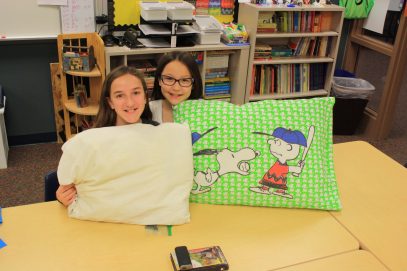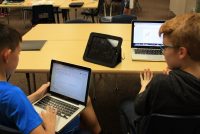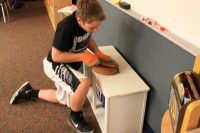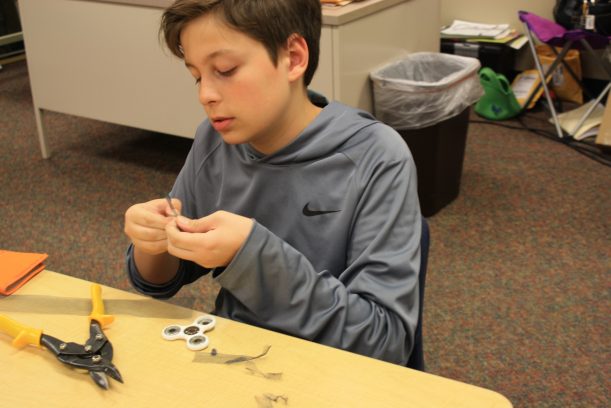Summit Students Revamp Ordinary Objects
Story by Rylee Robinson
What do toothpaste, cups, and tennis shoes all have in common? They were all improved upon to suit our everyday needs. Summit students in Colleen Ites’ Physics and Design class are currently doing a project to improve upon everyday products to better suit their needs and the needs of their peers.
This project – centered around improving everyday products – originally required students to come up with an idea. Over the years of teaching students this assignment, it has evolved from creating an idea to the actual manipulation of a product, allowing the students to do real-world tests. The evolution of the project has enabled students to look at the process of product development rather than just the idea of an invention.
Before beginning the project, students watch a video showing how different items have changed over time, as well as look at Ites’ own model improved product, the egg beater / whisk. Students examine and give feedback on the egg beater that features a whisk-like end. By changing the end of the egg beater to a whisk, Ites sets up her product to fail, allowing the students to catch her mistake. Seeing Ites’ first try fail teaches the students to better examine their own product before creating their plan.
“The project will teach the students to understand how things are marketed and the bias that is involved,” said Ites. “They will be able to think about this in an engineering sense, and how can their items can be transformed beyond their current state.”
The project involves many aspects of STEM (Science, Technology, Engineering, and Math) by having the students look at the engineering elements of efficiency, efficacy, and design. While looking at what to enhance and what product to manipulate, students have to understand accounting and costs like wholesale, mark-ups, and retail to try and make their final product profitable.
“The application of art and design, problems and statistics, and engineering, both simple and complicated, makes this a collective assignment,” said Ites. “This project also allows them to gain real-world experience.”
This semester, students are working on things like a solar-powered pillow that charges your device, pencil inserts for ball-point pen form, a highlighter that doubles as a pen, a fidget spinner that releases natural oils when being used, and an energy saving flashlight with changing color filters. For each of these products, students had to research existing patents to create provisional patents of their own. They then determined how their manipulation would affect the selling market of the product.
“We wanted to target people who are always busy, or who have to travel a lot,” said sixth graders Luna and Sierra who are building a solar panel pillow that can charge different devices. “Overall this project was more simple than we thought but we did run into a problem with the solar panels overheating the pillow filling.”
Students in Ites’ class are learning much more than formative writing, researching, and cross-curricular learning. These students are learning skills that they can carry with them well beyond school.
“I want my students to realize there is always another way to adapt things,” said Ites. “The first way may not be the answer, but there will be an answer. Their ideas have value and this project gives those ideas a life where they can strive to improve.”



